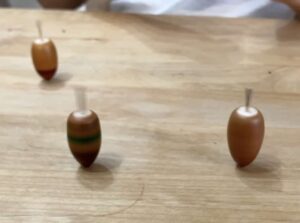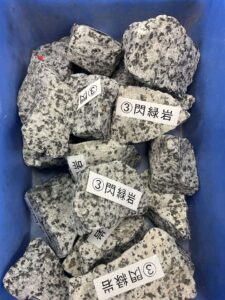Make Your Own Earth Cake: The Fun, Hands-On Strata Experiment!
I’m Ken Kuwako, your Science Trainer. Every day is an experiment!
When we delve into Earth Science, students naturally start asking, “What exactly is a stratum (layer of rock/soil)?” Showing them diagrams and photos from the textbook doesn’t always click. They look unconvinced, asking things like, “Does it really stack up like that?” or “What’s the difference between mud and sand?”
So, I decided to have them try a hands-on experiment: actually “creating and observing layers” themselves.
We modeled the formation of strata using gravel, sand, and mud. By using materials with different colors, we could recreate visually appealing and beautiful geological layers.The moment their eyes lit up—saying things like, “It looks like a cake!” or “Why did the pattern turn out like this?”—I knew I had won the day (laughs).
■ Materials Needed
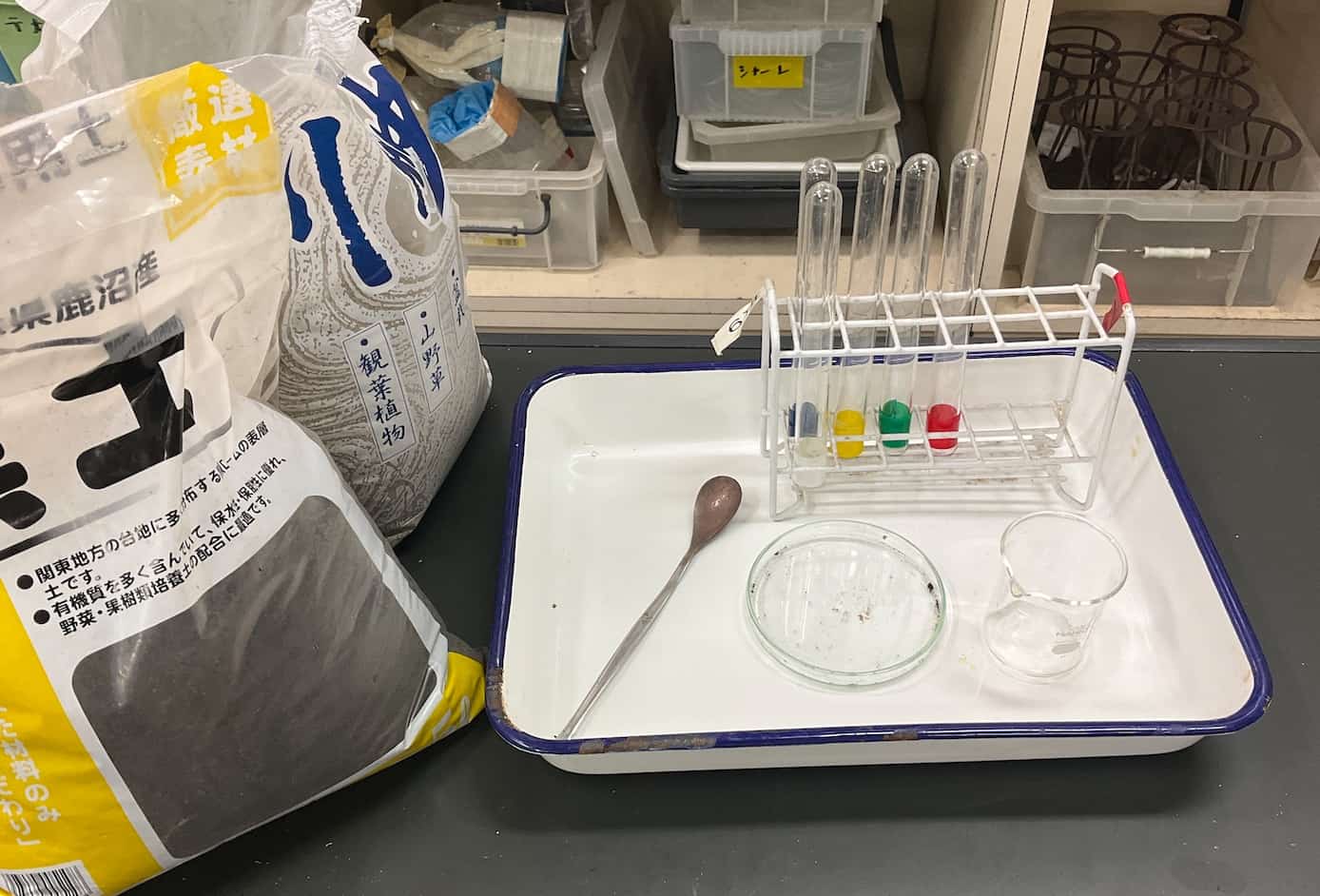
|
Materials/Equipment |
Notes |
|---|---|
|
River Sand |
Substitute for gravel and sand (e.g., Akagi series) |
|
Black Soil (Kurotsuchi) |
Substitute for mud (Gardening soil is fine) |
|
Colored Zeolite (Small-grain, Red) |
Substitute for gravel. Available at 100-yen shops. Vivid color provides excellent visual appeal (◎) |
|
Test Tube (Φ18) |
One per person or per group. Plastic is also acceptable |
|
Test Tube Rack |
Used to let the test tube stand undisturbed |
|
Plastic Cups |
Used for mixing and measuring materials. Can be used in place of Petri dishes |
|
Tray/Container |
Work area for mixing |
|
Spatula/Scoop |
Used for measuring materials (One heaped scoop ≈ about one teaspoon) |
Zeolite
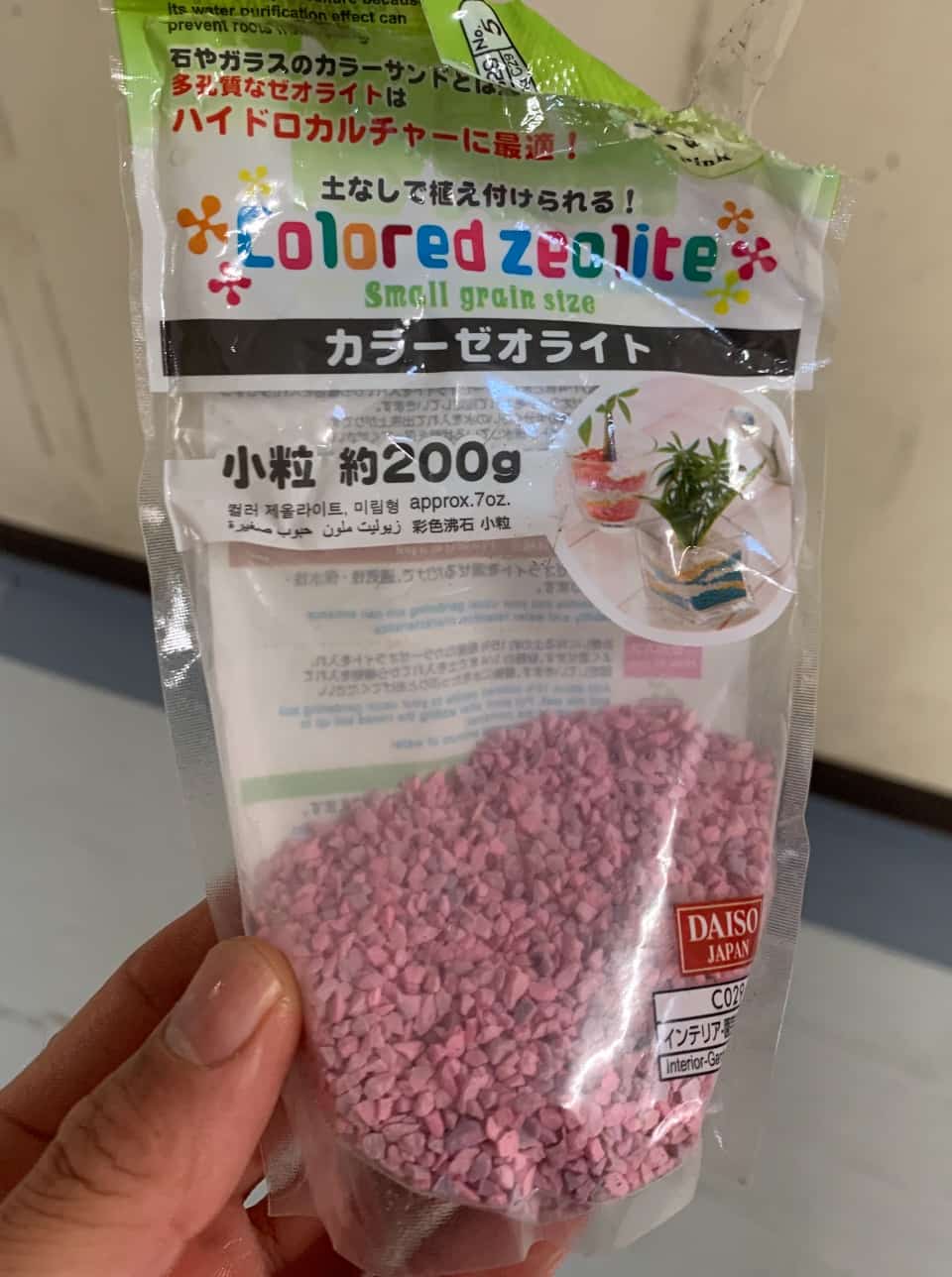
|
|
River Sand
|
|
We used Black Soil (Kurotsuchi) for the dirt.
|
|
■ Experiment 1: Let’s Create Strata!
① Take two heaped scoops of soil and two scoops of river sand into a plastic cup. Transfer the materials into a tray/container and mix well using the spatula/scoop.
② Scoop three large amounts of the mixed material from step ① into a test tube.
③ Fill the test tube from step ② with water until it is about 70% full.
④ Cover the opening of the test tube with your thumb and shake it well to mix the water and materials. While still covering it with your thumb, quickly invert the test tube once, return it to the upright position, immediately place it in the test tube rack, and observe it for a while.
⑤ Sketch your observation and consider why the layers formed as they did. When you actually perform Experiment 1, this is what you get:
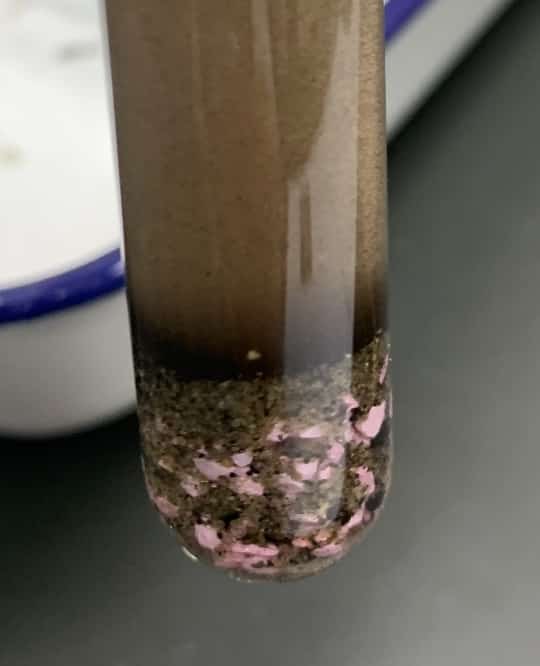
The layers settle in the order of gravel, sand, and mud, don’t they? Here are some sketches from the students:
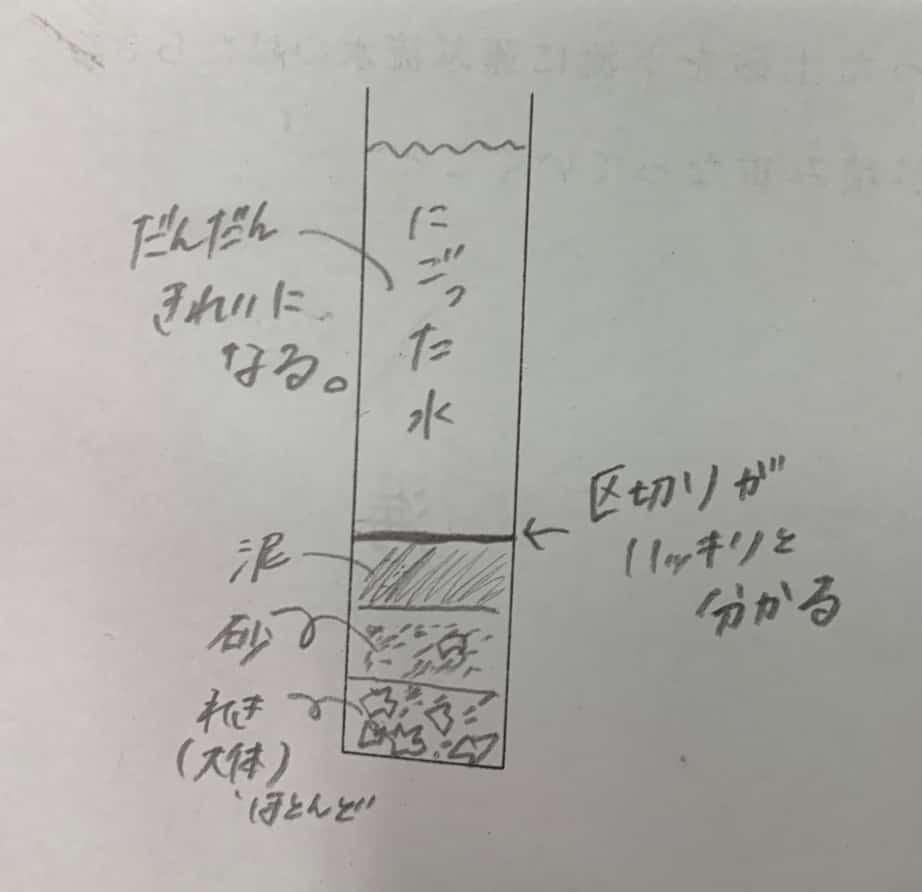
■ Experiment 2: Replicating Multiple Layers (Strata Stacking)
⑥ Add two scoops of the mixture from step ② to the test tube from step ⑤. Wait a while, then add another two scoops.
⑦ Sketch your observation and think about how geological layers are formed over time.
Experiment 2 will look like this:
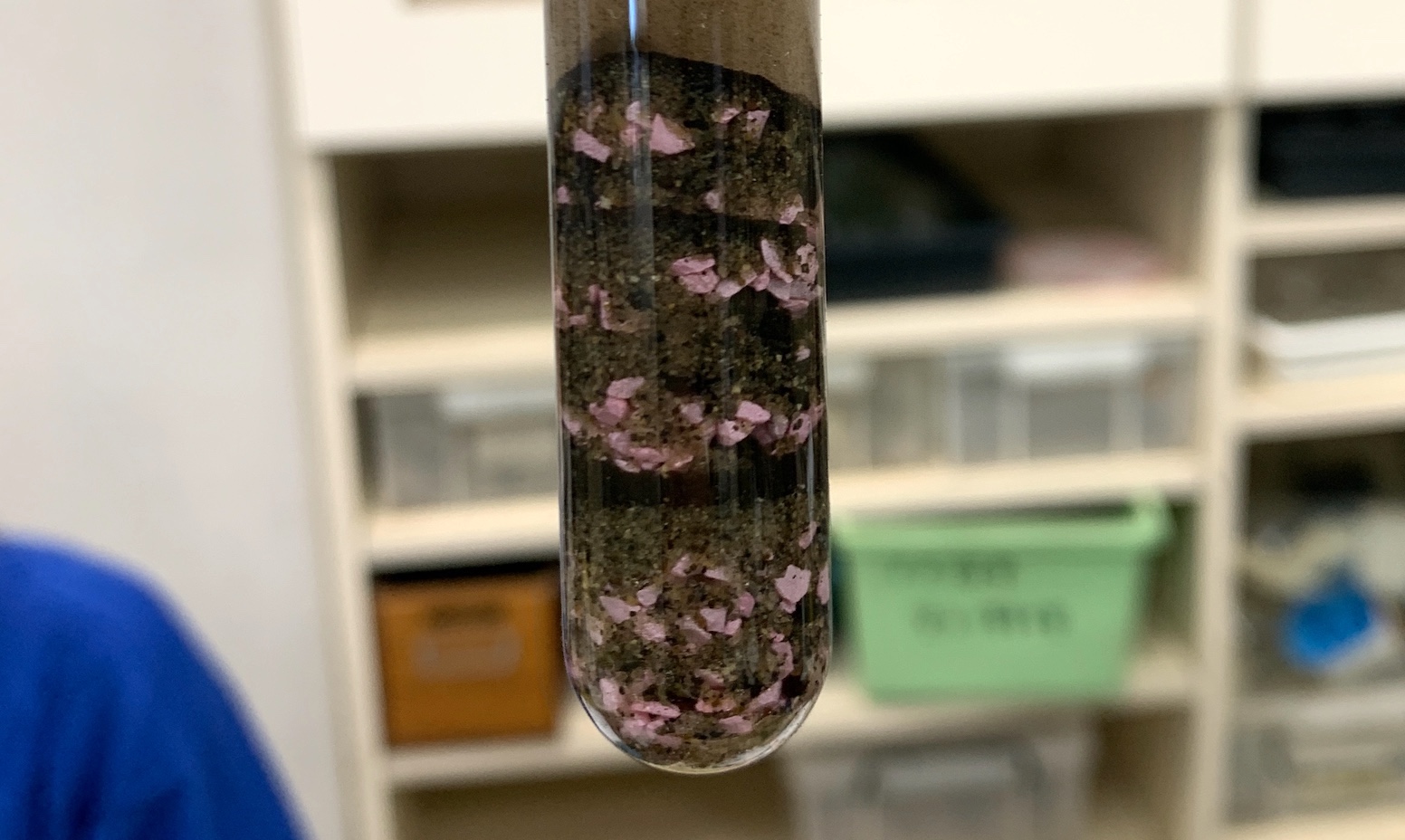
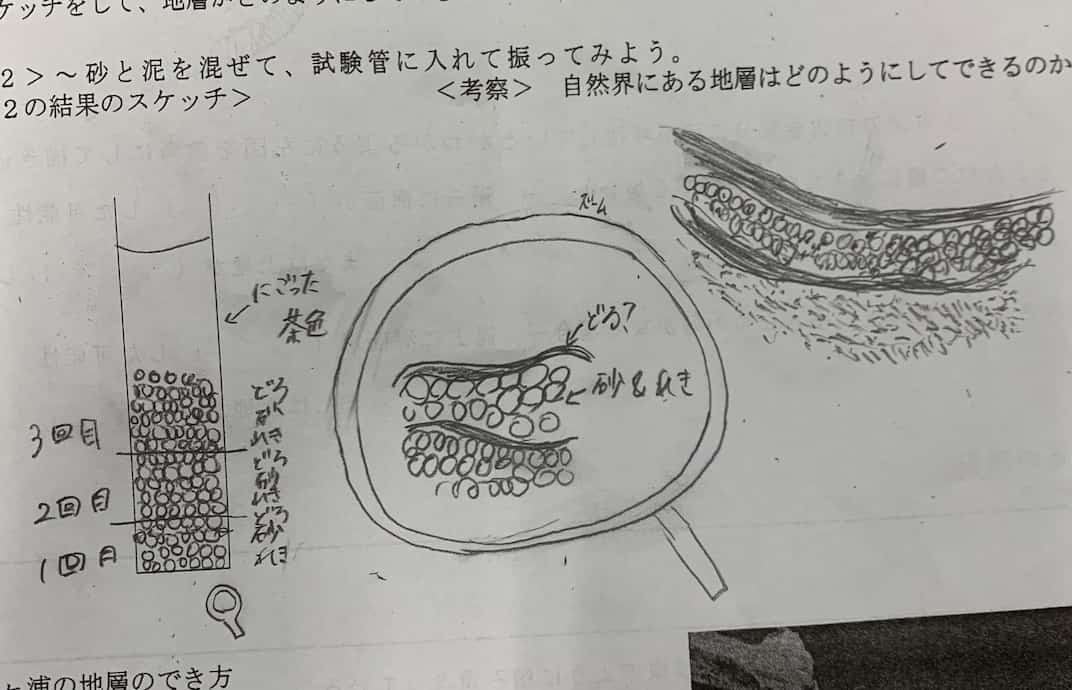
Even without the colored zeolite, you can get great results using just sand and soil, like in this image:
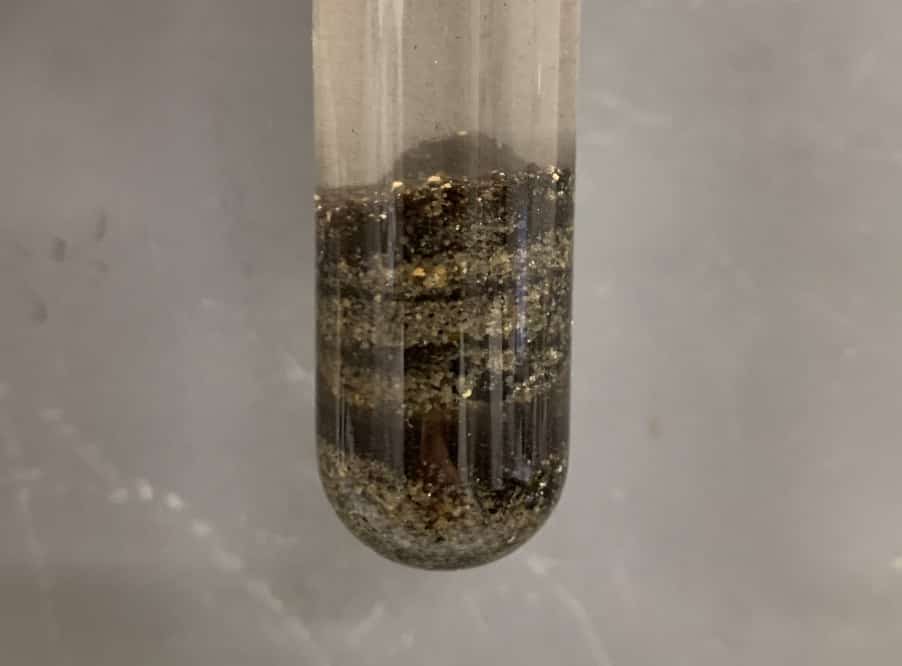
■ Teacher’s Notes & Classroom Tips
• The vibrant red color of the zeolite significantly boosts students’ motivation to sketch their observations.
• Differences in shaking methods and pouring order among groups lead to variations in the patterns, sparking engaging discussions where students ask, “Why?” and “Ours looks different!”
• As sketching accuracy improves, the experiment is highly effective for developing observation skills.
• By having students present on “Why the materials separated as they did” after the observation, concepts like particle size, specific gravity, and the action of water naturally emerge. This is the moment science knowledge truly becomes their own.
Contact & Requests
Make the wonders and fun of science more accessible! We clearly summarize fun science experiments you can do at home and the tips for doing them. Feel free to browse around!
Learn about the administrator, Ken Kuwako, here
For various requests (writing, lectures, science classes, TV supervision, appearances, etc.), click here
– Updates on articles are distributed on X (formerly Twitter)!
![]() We post experiment videos on the Science Idea Channel!
We post experiment videos on the Science Idea Channel!

![[商品価格に関しましては、リンクが作成された時点と現時点で情報が変更されている場合がございます。] [商品価格に関しましては、リンクが作成された時点と現時点で情報が変更されている場合がございます。]](https://hbb.afl.rakuten.co.jp/hgb/2c87aae9.92f4de68.2c87aaea.de587780/?me_id=1211165&item_id=10048640&pc=https%3A%2F%2Fthumbnail.image.rakuten.co.jp%2F%400_mall%2Fchanet%2Fcabinet%2F519%2F51508-2.jpg%3F_ex%3D128x128&s=128x128&t=picttext)
![[商品価格に関しましては、リンクが作成された時点と現時点で情報が変更されている場合がございます。] [商品価格に関しましては、リンクが作成された時点と現時点で情報が変更されている場合がございます。]](https://hbb.afl.rakuten.co.jp/hgb/2e36e330.9afbcf55.2e36e331.82deb4f1/?me_id=1217146&item_id=10017564&pc=https%3A%2F%2Fthumbnail.image.rakuten.co.jp%2F%400_mall%2Fkumazou%2Fcabinet%2Fkihon3%2F4939091011205.jpg%3F_ex%3D128x128&s=128x128&t=picttext)
![[商品価格に関しましては、リンクが作成された時点と現時点で情報が変更されている場合がございます。] [商品価格に関しましては、リンクが作成された時点と現時点で情報が変更されている場合がございます。]](https://hbb.afl.rakuten.co.jp/hgb/2b71acab.9c66f40c.2b71acac.71d48030/?me_id=1216297&item_id=10000037&pc=https%3A%2F%2Fthumbnail.image.rakuten.co.jp%2F%400_mall%2Fheiwa%2Fcabinet%2F00529276%2Fa-83.jpg%3F_ex%3D128x128&s=128x128&t=picttext)
